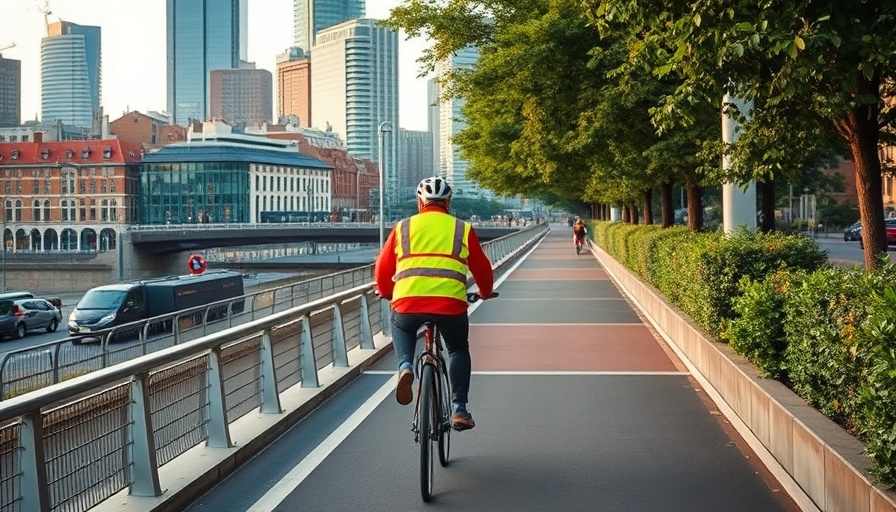
Burnie’s Cycling Plan: A Step Backwards
The recently unveiled Burnie City Centre Urban Plan has sparked controversy as bike riders and advocates for cycling safety voice their concerns. While the plan outlines a vision of improved cycling infrastructure, practical analysis unveils significant shortcomings that may leave cyclists in peril on busy streets.
Disconnect Between Intentions and Reality
City officials have touted the plan as a means to facilitate cycling in downtown Burnie, featuring 'green links' designed to aid cyclists. However, the details revealed in the proposed design raise alarms about safety and accessibility. Current specifications indicate that shared paths are inadequately designed, with widths not meeting the recommendations for a bustling urban environment where both cyclists and pedestrians coexist.
Proposed Lane Widths: Dangerously Narrow
At the heart of the controversy are the painted bike lanes in the proposed city loop, which measure a mere 0.8 metres in width. This is significantly below the recommended guidelines that advocate for lane widths of at least 1.5-1.8 metres. Furthermore, with no buffer space from parked cars, these narrow lanes not only compromise cyclist safety but also make navigating the streets an uncomfortable experience.
Understanding the Standards: What the Experts Say
The Tasmanian government guidelines assert that painted bike lanes should only be employed under low-traffic and low-speed conditions, suggesting traffic volumes lower than 400 vehicles per busiest hour. However, Burnie’s proposed design may not adhere to these critical safety measures, leading to potential accidents that endanger riders and pedestrians alike.
Importance of Adequate Space for Cyclists
A review of the proposed infrastructure reveals that it does not account for bicycle dimensions adequately. Standard bicycles require widths nearing 1 metre while cargo bikes necessitate even more space. These design limitations underscore a crucial oversight in Burnie’s cycling strategy that could deter individuals from choosing biking as a sustainable commuting option.
Suggestions for Improvement and Community Engagement
To enhance cycling conditions, experts suggest that the council should reconsider lane configurations, potentially by reducing traffic lanes and reallocating that space to create safer cycling routes. More public involvement could yield crucial feedback on the urban plan’s perceived inadequacies, ensuring the project serves all modes of transport sustainably. Residents are encouraged to share their concerns and suggestions with the council before the February 2 deadline.
Wrap-Up: A Call for Reevaluation
The Burnie City Centre Urban Plan professes a commitment to making cycling more accessible, yet the lack of sufficient infrastructure adjustments raises serious questions about the proposed safety of bike riders. As community members prepare to engage with city planners, it becomes imperative to advocate for effective and safe cycling routes that truly promote a healthier and more eco-friendly lifestyle.
 Add Row
Add Row  Add
Add 




Write A Comment